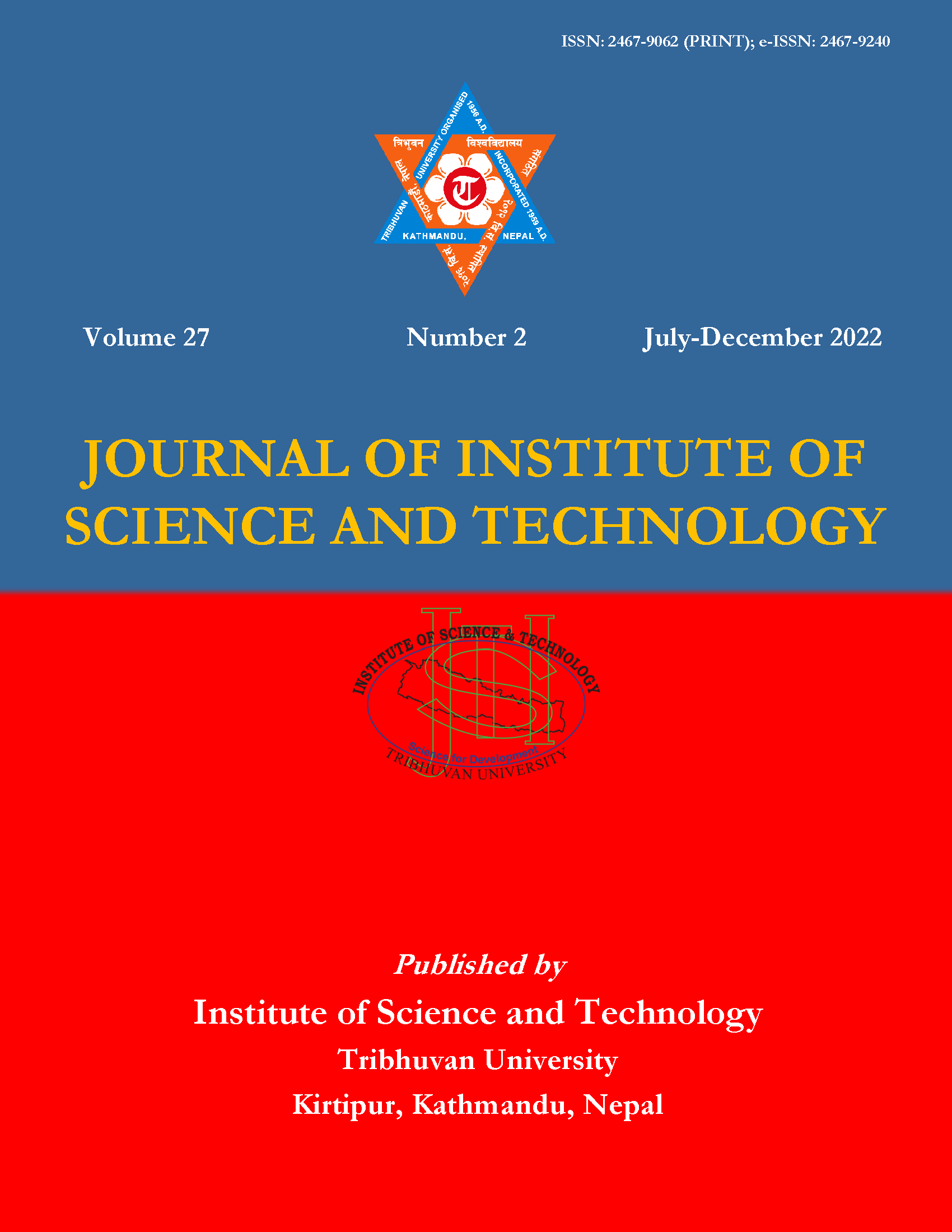Antibacterial Activity of Lemon Juice on Multi-Drug Resistant Klebsiella species Harboring blaOXA-48 Gene
DOI:
https://doi.org/10.3126/jist.v27i2.37483Keywords:
Bactericidal effect, blaOXA-48, Klebsiella species, lemon juice, multi-drug resistanceAbstract
Klebsiella species cause a wide range of infections, and infections caused by multi-drug resistant species have significantly higher rates of morbidity and mortality. Extended spectrum β-lactamase ESBL prodan emergingd carbapenem resistant K. pneumoniae is emerging problem in hospital settings worldwise. However, the distribution of blaOXA-48 in Klebsiella pneumoniae has rarely been described from Nepal. This study was carried out to evaluate in vitro antibacterial activity of lemon juice against clinical isolates of Klebsiella having blaOXA-48 gene. A total of 667 clinical specimens were processed for the identification of Klebsiella species by morphological, cultural and biochemical tests. Methods of antimicrobial susceptibility testing and confirmation of extended spectrum beta lactamase (ESBL) were adopted from the guidelines of the Clinical Laboratory Standard Institute (2018), and blaOXA-48 gene was detected by polymerase chain reaction. The antibacterial activity of lemon juice was assayed using agar well diffusion, and the bactericidal effect of lemon juice was determined by the broth dilution method. Out of 204 culture positive isolates, 29.5% were Klebsiella species of which 16.7% were ESBL producers. Among 19 isolates positive to Modified Hodge test, 68.4% were detected with the plasmid mediated blaOXA-48 gene. The MIC of lemon juice ranged from 12.5-50% (v/v), and the bacteriostatic activity was observed after 6-8 hours of exposure. The tested varieties of lemon juice showed potential inhibitory activity against Klebsiella species indicating that lemon juice has the potential to be used as an antibacterial agent.
Downloads
Downloads
Published
How to Cite
Issue
Section
License
Copyright (c) 2022 Institute of Science and Technology, T.U.

This work is licensed under a Creative Commons Attribution-ShareAlike 4.0 International License.
The views and interpretations in this journal are those of the author(s). They are not attributable to the Institute of Science and Technology, T.U. and do not imply the expression of any opinion concerning the legal status of any country, territory, city, area of its authorities, or concerning the delimitation of its frontiers of boundaries.
The copyright of the articles is held by the Institute of Science and Technology, T.U.




